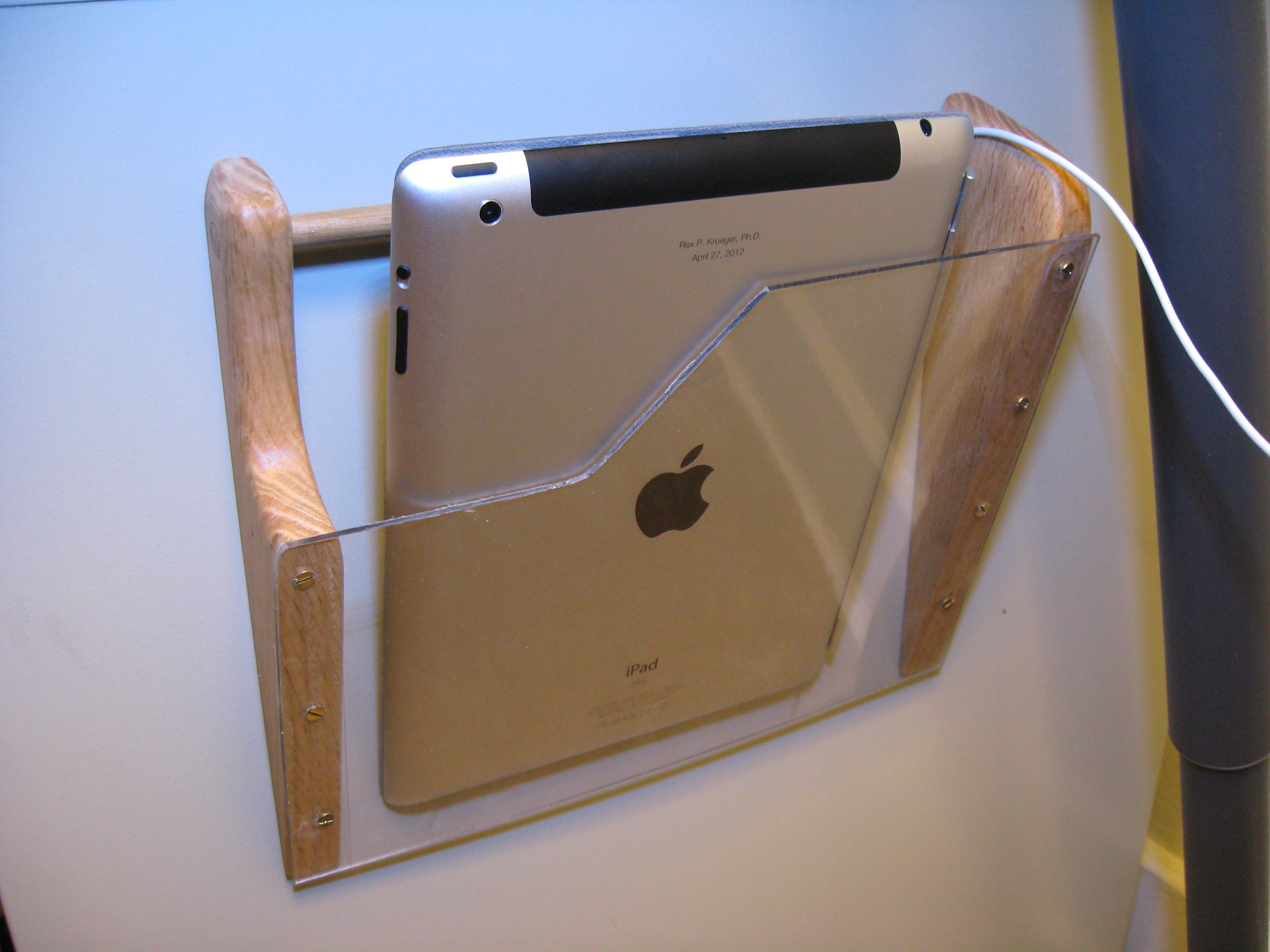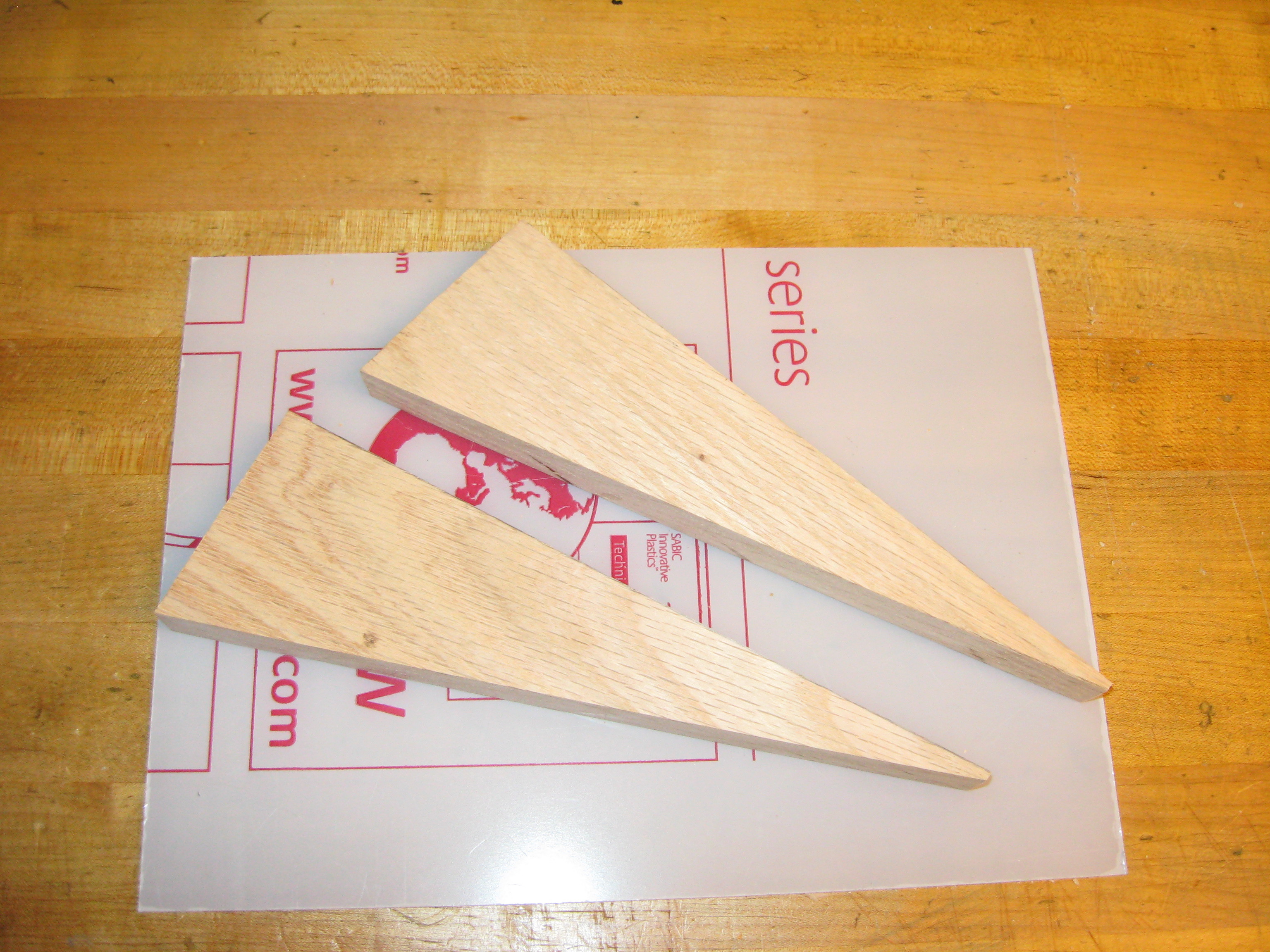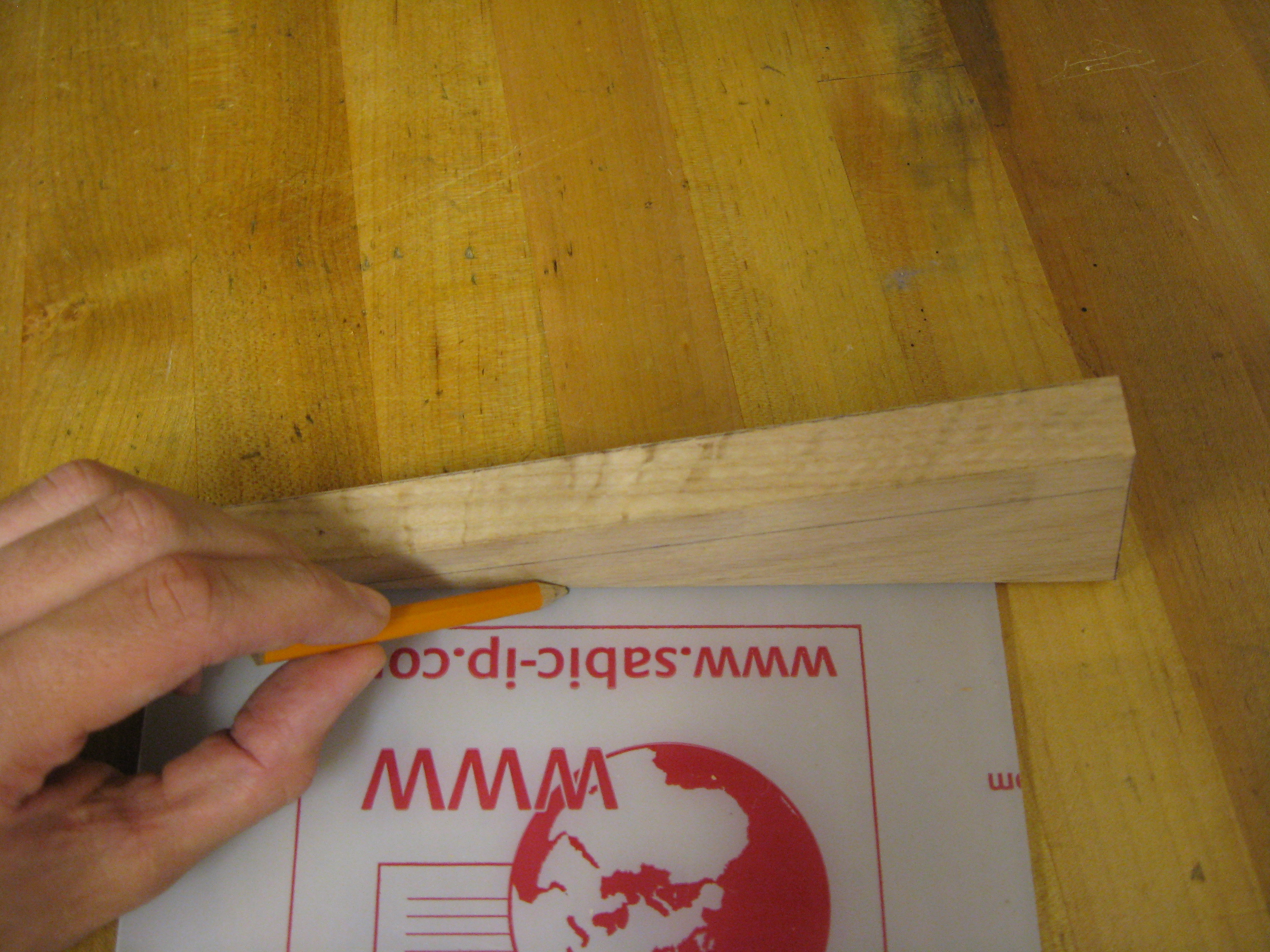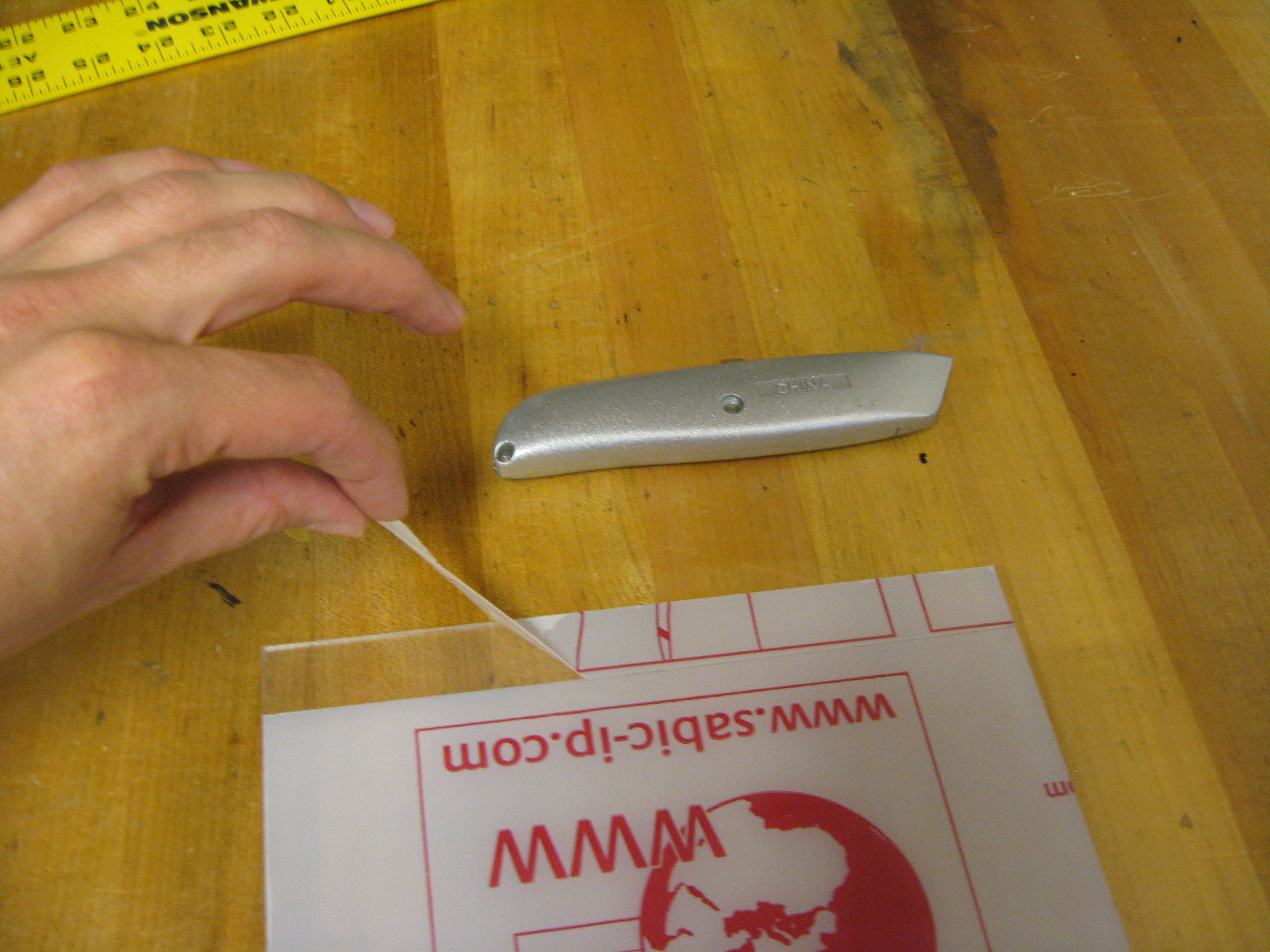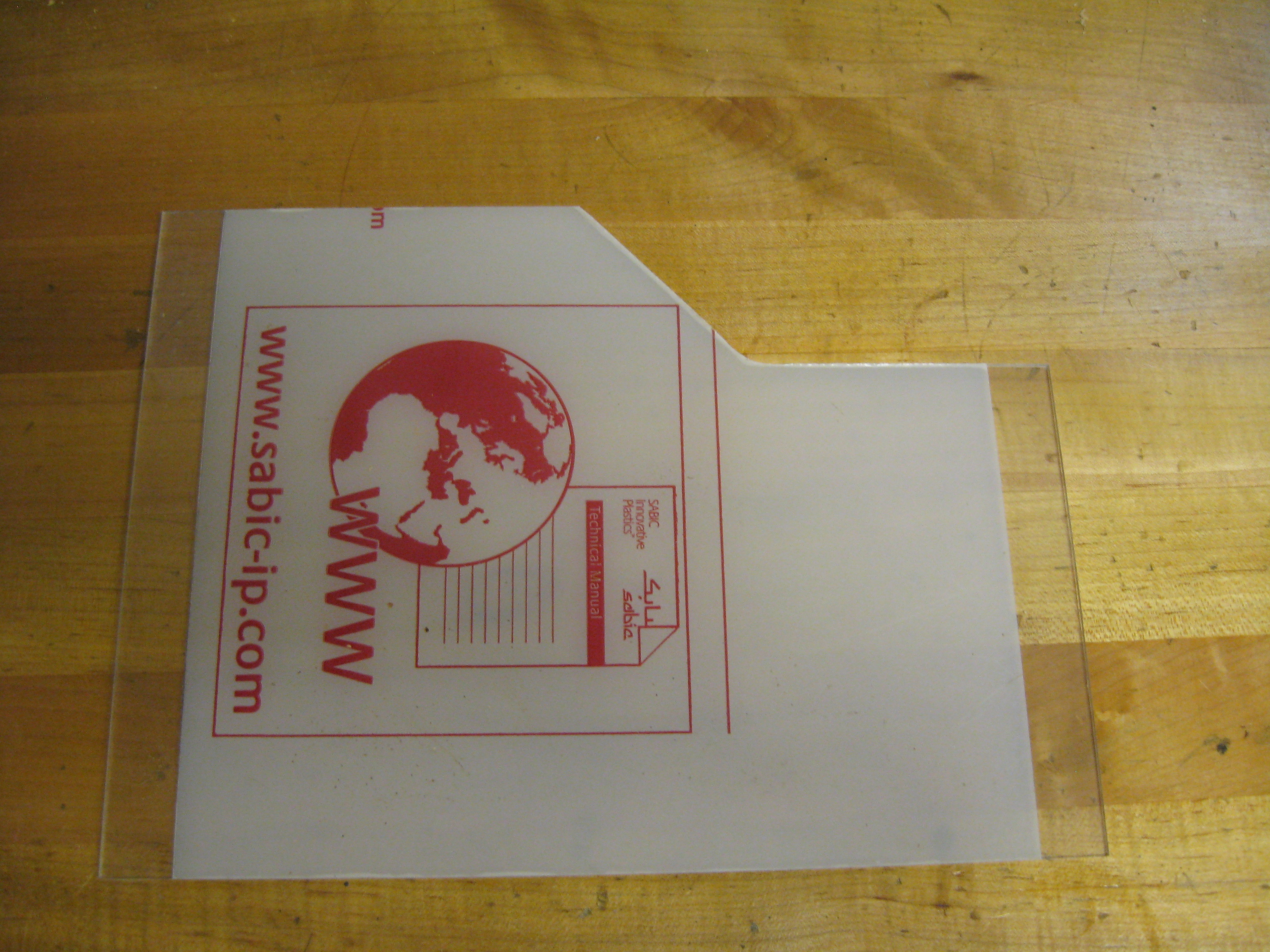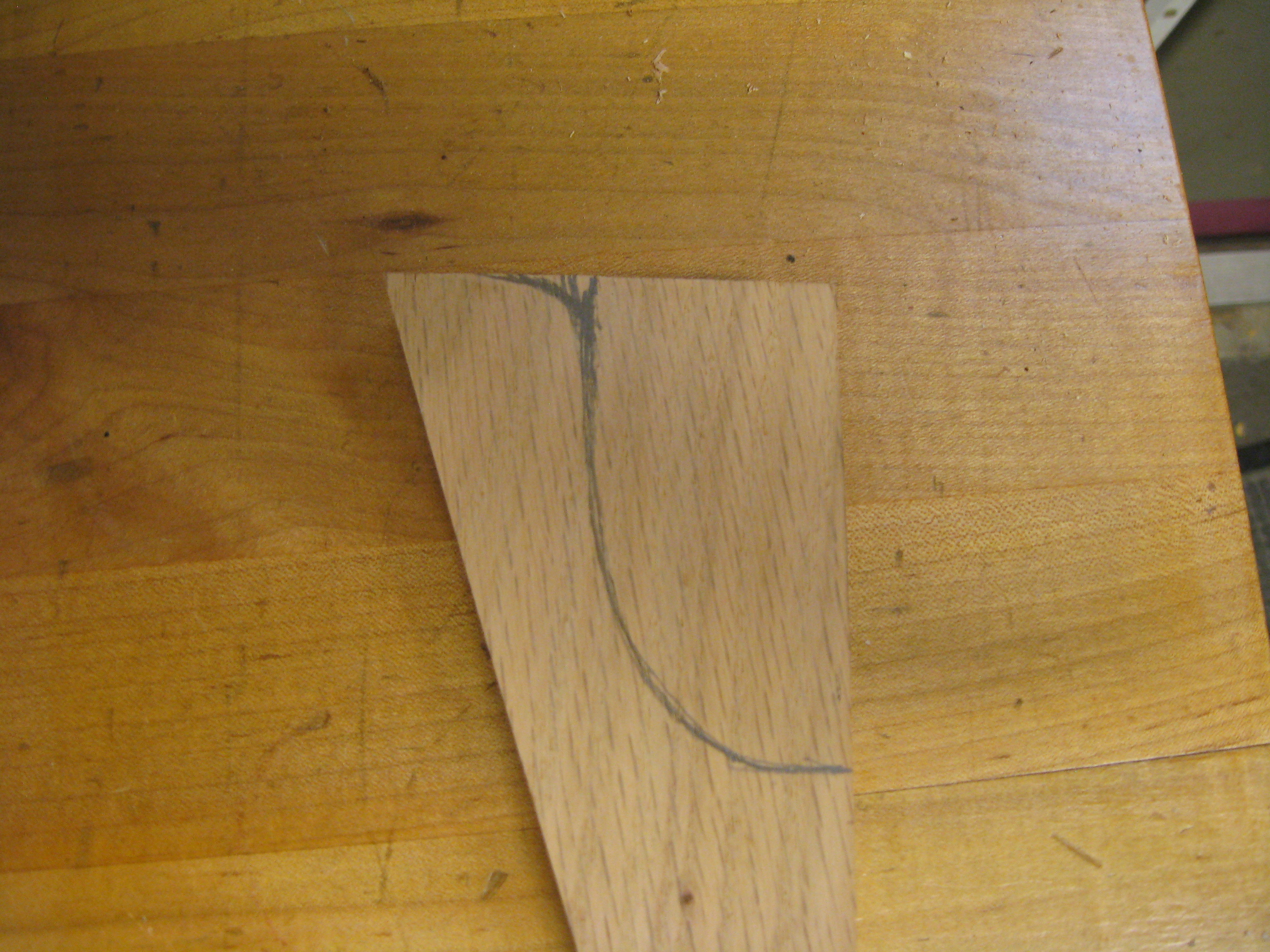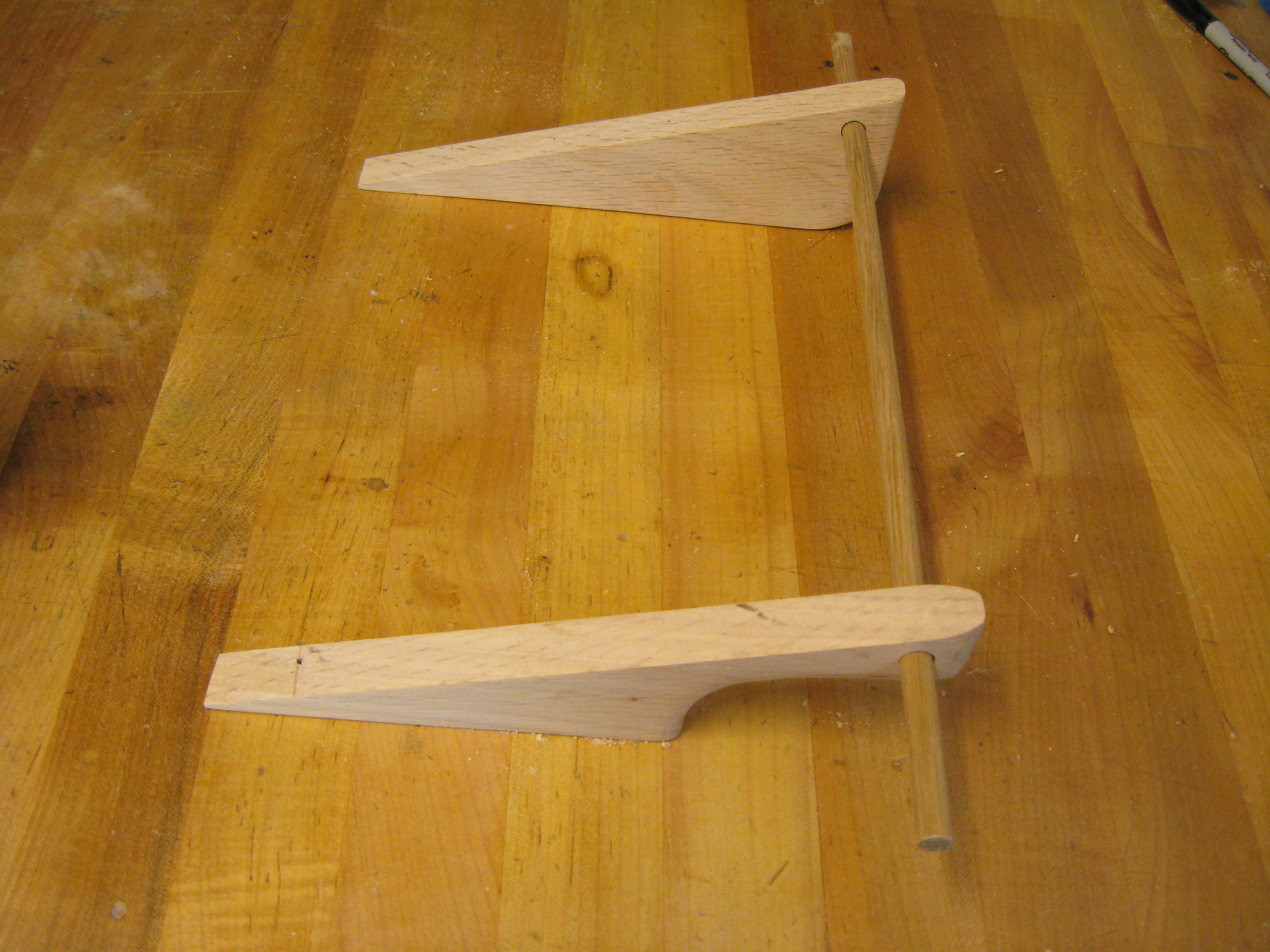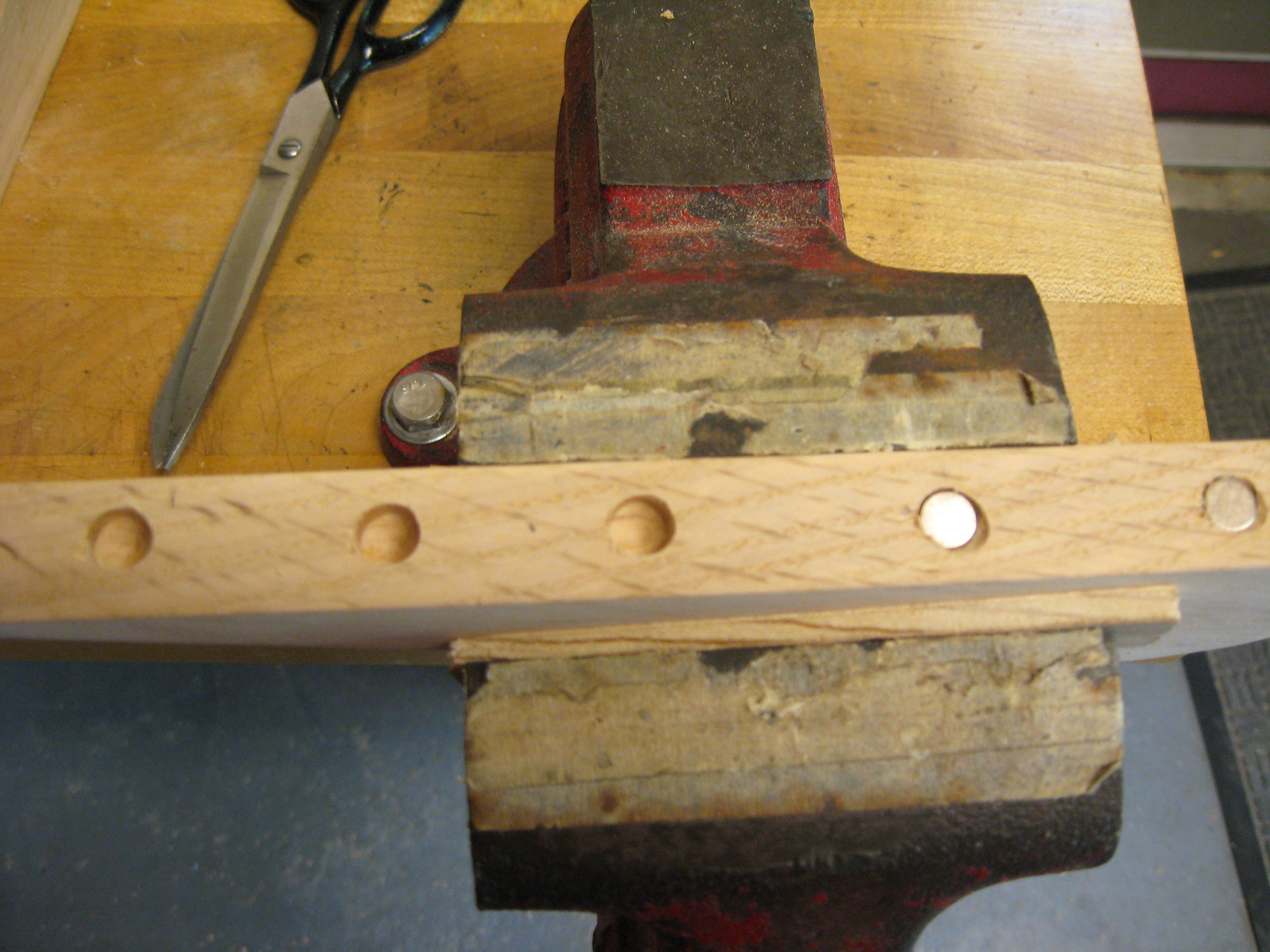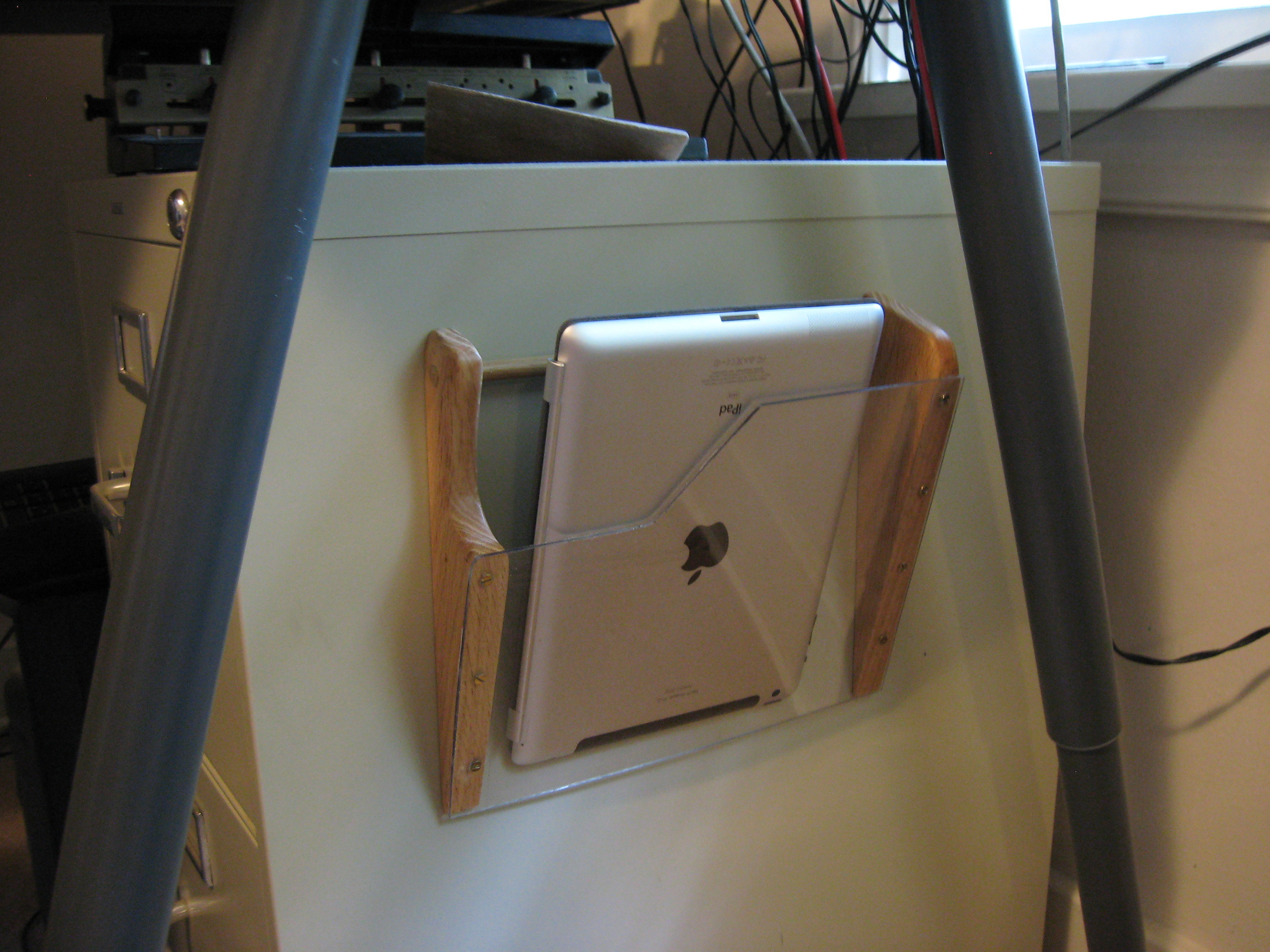When I got my new iPad, I immediately came up against a few problems. I don’t have a lot of horizontal space in my office because my desk is always cluttered. I also needed a safe place to leave the iPad while I charged it. Leaving this expensive piece of gear balanced precariously on a guitar amp just didn’t seem like a good idea.
Then I noticed the small metal filing cabinet I keep under my desk. One whole side was totally unused. I thought that if I could just find a way to mount the iPad to the cabinet, then I would have a safe space for charging and storage. I came up with the holster design because I also wanted to be able to grab the iPad quickly when I needed it.
At the heart of this project are Harbor Freight’s neodymium magnets (part #67488). These little wonders come in packs of 10 for about $1.50 a pack. The magnets themselves are only about the size of little watch-batteries, but don’t let their size fool you; these things are crazy-strong. The package claims that they’re five times stronger than samarium-cobalt magnets and I believe it. Neodymium is the same material used to make the tiny-but-powerful speakers in ibud earphones and some laptops. When you pull the magnets out of the package, you’ll be amazed at how hard it is to separate them. We’ll use these super-strong magnets to get our holster to mount securely to any metal surface.
As you use the magnets, be aware that you can increase their holding power by stacking them. In this project, we’ll use stacks of two. Keep in mind also that strong magnets can pose their own challenges in the workshop. These things can attract metal shavings you didn’t even know were there. You also need to pick some of your tools with care; I once used steel wool to buff the finish of a project that included some magnets. The fibers flew immediately to the magnets and were almost impossible to get off.
One final note. Most of us can be wary about using magnets near computers, but never fear. The iPad uses flash memory and an LCD screen, neither of which is harmed by magnets. Keep in mind that Apple’s own Smartcover affixes to the iPad with magnets, so there’s nothing to worry about.


